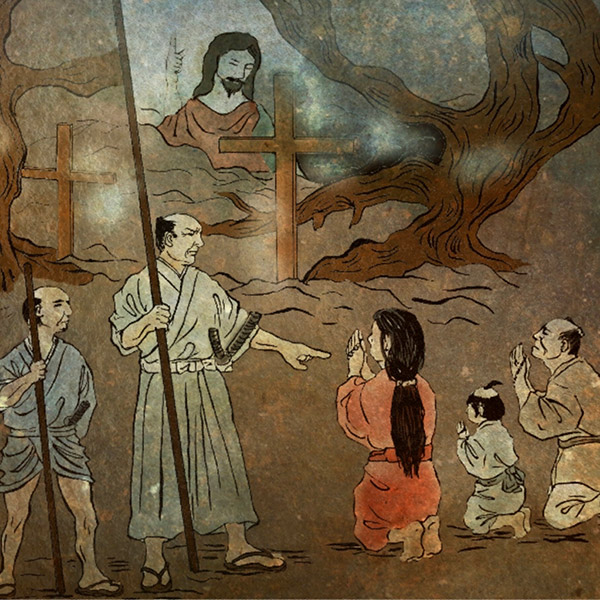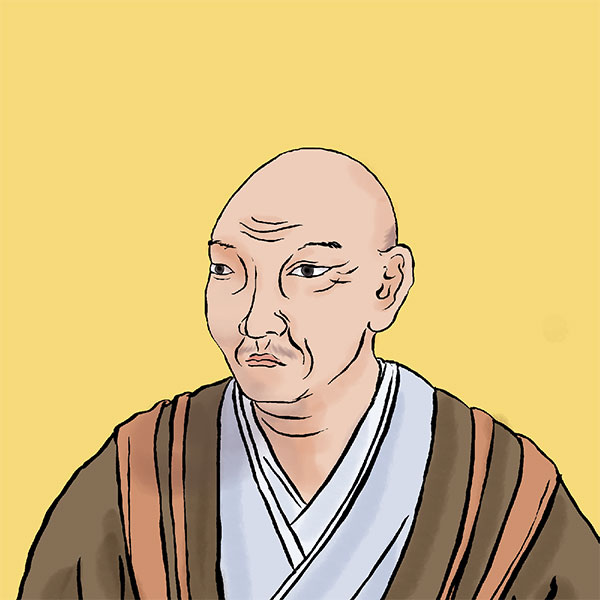Bungo collapse (2/2)Round-up of hidden Christians in Oita

Bungo collapse
- Article category
- case file
- Incident name
- Bungo collapse (1660-1682)
- place
- Oita Prefecture
- Related castles

Funai Castle
- people involved
During the Sorin era, Christianity spread mainly in the Funai, Usuki, and Tsukumi areas of Bungo, the Notzu, Mie, and Ume regions of Ono District, the Kutsuami region of Naoiri District, and the Yufuin region of Hayami District, and according to one theory, at its peak there were as many as 30,000 people. It is said that it exceeded.
However, Yoshimune Otomo, who succeeded Sourin, converted to Christianity in April 1587, but immediately renounced Christianity due to Hideyoshi's banishment order issued by Hideyoshi in June. He makes anti-Christian moves such as ordering the missionaries to leave.
Afterwards, Yoshimune was forced to surrender due to a blunder during the Bunroku War when he attacked Korea, and Bungo was divided and ruled by local powerful families. After that, Bungo was divided into seven feudal domains: Kitsuki, Hiji, Funai, Usuki, Saeki, Oka, and Mori domains, as Tokugawa Ieyasu was divided among his vassals as a reward for the Battle of Sekigahara, where he took over the country. It became a state of "separation of small clans." By the way, current Oita prefecture was divided into eight domains, including the Nakatsu domain in Buzen.
Christianity was thriving in Bungo even in the early Edo period. The situation at that time can be glimpsed from various historical materials, such as the ``Paper Mario Marega Collected Documents in the Vatican Library'' collected by Father Mario Marega in the 20th century. According to such historical materials, there were Jesuit bases in Bungo around the 18th year of the Keicho era in Takada (Oita City, Oita Prefecture) and Nozu (Usuki City, Oita Prefecture) of the Usuki Domain, and Shiga (Taketa City, Oita Prefecture) of the Oka Domain. . In addition, the Usuki domain ruled by the Inaba clan was friendly to Christians, and there is data that there were approximately 15,000 Christians within the domain. The legal wife of the third feudal lord, Kazutomi Inaba, was the daughter of Garasha Hosokawa, and the missionaries worked tirelessly to build the church.
Furthermore, Hidenari Nakagawa, the first lord of the Oka domain, was a cousin of Ukon Takayama and a brother-in-law of Oribe Furuta, who is said to have been a Christian, and is said to have been a Christian himself. For this reason, the Oka domain was also tolerant of Christianity, and in 1604, the Society of Jesus built a church within the domain.
The situation changed completely when Ieyasu issued an edict banning Christianity in 1612 and 1613. Following the policies of the Edo shogunate, the Usuki domain expelled missionaries from Takada and Notzu in 1614, and forced the people of the domain to convert from Christianity. According to historical documents, 10 people apostatized Christianity in 19th year of Keicho era (19th year of Keicho era) and 50 people in 1622.
In addition, movements to suppress Christians began to be seen in the Funai, Kokura, and Oka domains. In the Oka domain, Hisamori Nakagawa, who succeeded Hidenari Nakagawa, promoted the persecution of Christians. According to the annual report of the Society of Jesus at the time, it appears that Bungo, which was divided into small feudal domains, suppressed hidden Christians as proof of their loyalty to the shogunate. Does this mean that the small feudal clans, which lacked power, were afraid of change? Furthermore, with the outbreak of the Shimabara Rebellion, each domain further strengthened its ban on Christianity.
Occurrence of Bungo collapse
In May 1660, as the ban on Christianity became stronger, more than 70 Christian men and women were captured in Takada Tenaga (Oita City), the territory of the Kumamoto Domain in Oita District. As a result, crackdowns have been tightened in Takada, Katsuragi, and Nyu (all in Oita City). The flow spread to domains such as the Usuki, Oka, and Funai domains, other domains, and the shogunate, and many hidden Christians were captured. This trend continued until 1682, and is known as the ``Bungozuru''. By the way, ``Kakure'' refers to incidents in which Christians are exposed as a group through secret information, and as a result of interrogation, they are caught and subject to some kind of punishment.
The Bungo Collapse was carried out under the leadership of the Nagasaki Magistrate, not the individual clans. Combining historical materials from the time, it is estimated that over 1,000 Christians were arrested during the Bungo Collapse, and were sometimes tortured and executed.
For example, 578 people were arrested in the Usuki domain alone during this period. Of these, 156 people were arrested in Kudo Village, Ama District (Oita City) from 1669 to 1669. In addition, according to the report "Bungo Province Oita District/Kusu District Kirishitan Sect Relatives Document" sent by the lord of Nagayama Castle in Hita District to the Nagasaki Magistrate in 1686, during the period of the Bungo Collapse, Oita District and The number of people arrested in Kusu County was 220, 125 men and 95 women. Of these, 57 were sentenced to death, 27 were sentenced to death in Nagasaki prison, 32 were sentenced to death in Hita prison, and 65 were pardoned and released, and quite detailed records remain.
The exposed Christians were captured by the domain's active forces, and as a general rule, those captured were sent to Nagasaki where they were subjected to strict scrutiny by the shogunate. As a result, many people apostatized. Although the ``fallen Christians'' who apostatized were subject to recording and surveillance, they were able to return to their original homes. However, if they broke the rules, they were subject to execution, and it seems that there were a certain number of cases in which people did not completely abandon Christianity, even though they had apostatized.
By the way, at the beginning of the Bungo Collapse, rather than arresting Christians openly, they secretly tried to find out whether they were Christians or not and avoided making it into an incident. It is not clear why they tried to carry out the raids in secret, but there is a theory that they wanted to cause the village society to collapse due to mass raids.
What was the intention of the “collapses” that occurred multiple times at the same time?
In fact, around the same time as the Bungosuru, another collapse occurred in another location. In 1657, a ``gun collapse'' occurred mainly in the county village of the Omura domain in Hizen Province (Omura City, Nagasaki Prefecture), and 608 people were arrested and 411 were executed. In addition, in the ``Nobi collapse'' that occurred around Mino and Owari in the first year of Kanbun (1661), 207 people died in 1665, 756 people died in 1667, and 756 people died in 1667 (1669). 33 people were executed in 2010).
In addition to the shogunate's efforts to make a show of it, the reason behind these large-scale collapses seems to have been the shogunate's intention to control the various clans and flaunt its own power. Behind the scenes of establishing a system that strictly prohibited Christianity, the shogunate strengthened its control over local areas. By taking the lead in causing the collapse, the Nagasaki magistrate intervened in the banning of Christianity throughout Kyushu even after the collapse, and strengthened the power of the shogunate in Kyushu.
Furthermore, the shogunate established a family registration system behind the scenes of its ban on religion. In 1671, the Shogunate mandated the creation of the ``Sect Ninbetsu Kaicho,'' which combined the Ninbetsu Kaicho, which was used for the purpose of understanding the labor force, and the Sect Monarchy. It served as a so-called family register. There were many political intentions behind the system of banning Christians.
Reread the article on the Bungo collapse.
- people involved

- WriterNaoko Kurimoto(Writer)I am a former travel industry magazine reporter. I have loved history, both Japanese and world history, since I was a child. I usually enjoy visiting temples and shrines, especially shrines, and often do ``pilgrimages to sacred places'' themed around historical figures. My favorite military commander is Ishida Mitsunari, my favorite castle is Kumamoto Castle, and my favorite castle ruins is Hagi Castle. My heart flutters when I see the ruins of battle castles and the stone walls of castle ruins.




